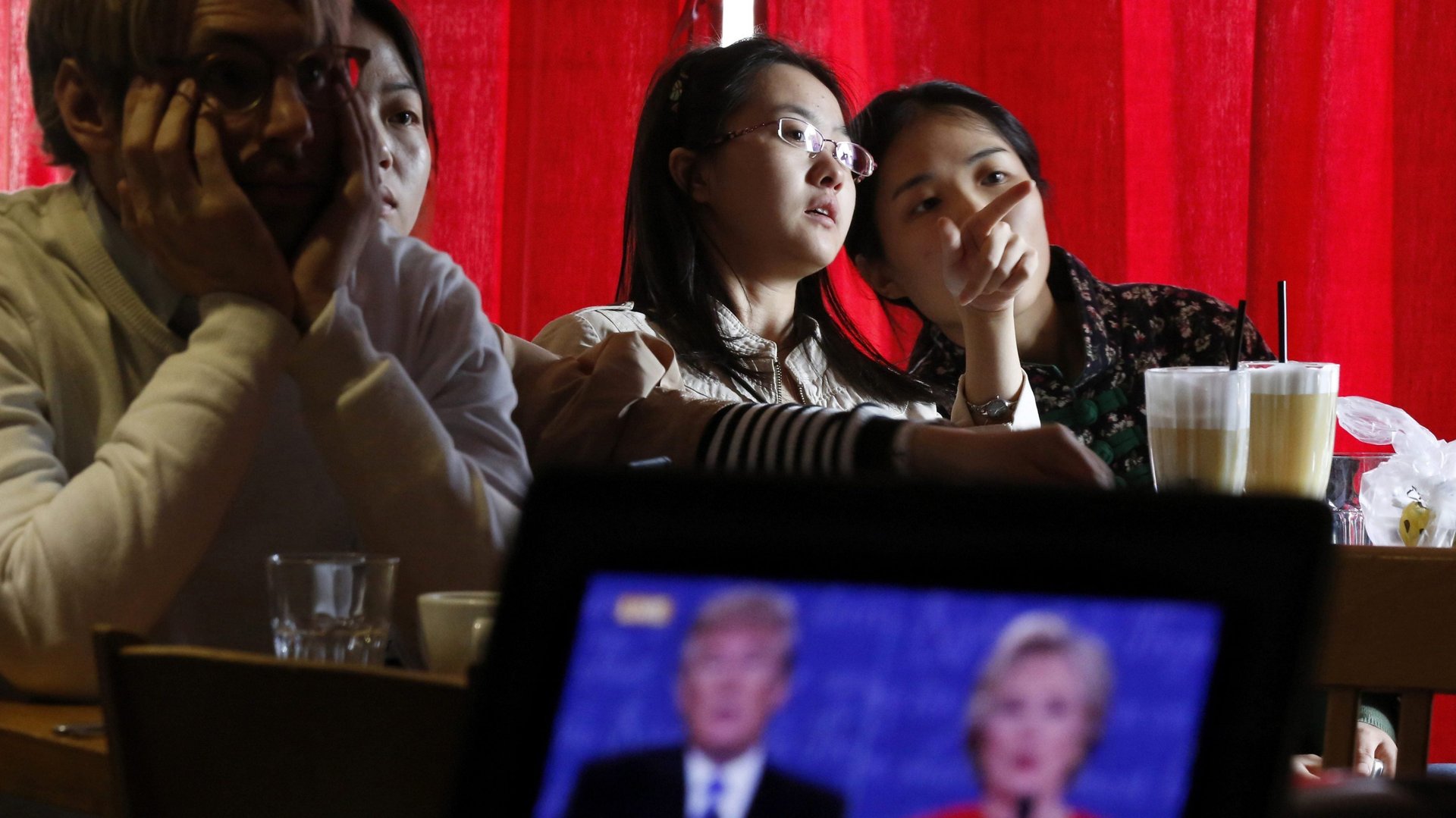Trump is threatening to bar the million international students that US colleges need to subsidize tuitions each year
American universities look to international students for diversity, talent, and perhaps most importantly, to fill their coffers.


American universities look to international students for diversity, talent, and perhaps most importantly, to fill their coffers.
Over one million international students attended American colleges and universities in the 2015-2016 school year—accounting for more than 5% of all higher education students in the US. Nearly 330,000 of these students are Chinese. In just the last decade, the total number of international students doubled and the number of Chinese students increased fivefold.
If US president-elect Donald J. Trump carries out his threats to increase restrictions on immigration to the US, many American universities will be left scrambling.
Just looking at the share of international students actually underestimates their importance to the US higher education system. Unlike American-born students, international students tend to pay full tuition—some schools even have additional surcharges just for being foreign. Though they make up 5% of students, international students pay 10% of all paid tuition, estimates Moody’s (paywall). The Association of International Educators found that international students contributed about $32.8 billion to the American economy during the 2015-2016 school year.
Several of the countries that could be most impacted by Trump’s immigration policies are among those that supply the most students to the United States.
With over 330,000 students, China contributes almost double the number of international students of any other country. Trump’s threat to stop issuing visas (paywall) to countries that won’t take back deported undocumented immigrants could lead to a huge decrease in Chinese students—who need to be granted F-1 visas to study in the US.
Schools like the University of Illinois at Urbana-Champaign (UIUC)—where about 11% of the student population is Chinese—rely on full-tuition-paying Chinese students to subsidize the rest of their student population. If Chinese students are denied visas, UIUC, and the many other schools with large Chinese populations, would find themselves in a financial bind.
Following China and India, the third most common origin country of international students is Saudi Arabia. Some 60,000 Saudi Arabian students study in the US today—nearly 20 times more than a decade ago. Trump’s call for extreme vetting of immigrants, including a ban on immigration from places where terrorism is widespread, would deplete these numbers.
Even if Trump doesn’t make significant changes to immigration policy, the president-elect’s rhetoric may have already scared off many prospective students. Surveys done by international-study promoters FPP EDU Media and Study in the USA both found that students would be less likely to study in the US if Trump beat Hillary Clinton.
Some international students already studying in the US are reconsidering whether it is wise to stay. “While I still have two more years to go, many of my family members are urging me to come back,” Ruba Al-Balwi, a Saudi Arabian sophomore at the University of Tennessee, told the newspaper Al Arabiya.
American universities and colleges are dependent on international students like never before. If Trump sticks to his strict immigration stances, US higher education is in for a rude awakening.